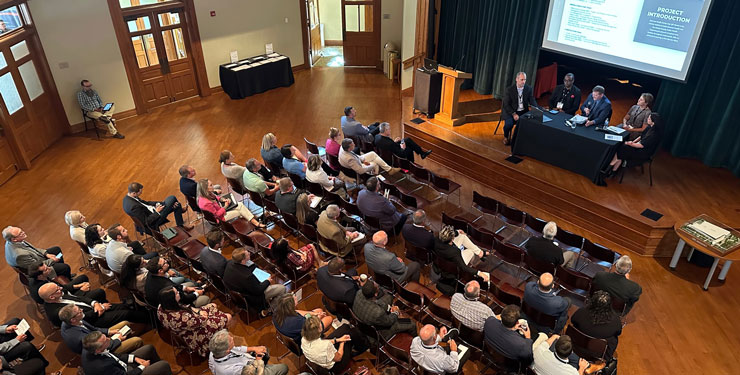
How To Create An Exceptional Patient Experience In Healthcare

The pandemic accelerated several healthcare trends, but none more so than the concept of patients as consumers. In this era, patients evaluate healthcare services much like they do retail interactions—sharing experiences and reviews online, seeking out the opinions of others, and constantly searching for the best overall service and value.
Changes in patient behavior over the past decade have forced organizations to reconsider their approach and self-evaluate from this new perspective. Updated metrics provide a more inclusive picture than Hospital Consumer Assessment of Healthcare Providers and Systems (HCAHPS) surveys. For these reasons, it is vital that leaders are present to experience and evaluate how physical environments can impact a patient’s perception of a healthcare facility and its services.
What Is “Retailization” Of Healthcare?
Patients became more proactive about healthcare during the pandemic. Left on their own for more than a year, individuals learned to become their own advocates. Employment changes and concerns exacerbated the impact of pricing in the marketplace, creating greater competition within different organizations as they attempted to navigate an unfamiliar landscape in which patients approach healthcare as they would consumers of a retail-based business.
This leaves healthcare organizations playing catch-up—reacting to a change that’s already occurred. Patients view healthcare services through a consumer’s lens, and healthcare organizations need to do the same. Healthcare business models are based on outcomes rather than patient experience. Organizations that quickly adopt the retailer’s point of view will experience faster and greater success in the coming years.
The 360-Degree Brand Experience
Like retailers, healthcare organizations will begin to compete with one another in myriad forms. Working around two universal truths—outcomes are the main concern of practitioners, and pricing remains a top issue—frees organizations to consider the overall experience and “bang for the buck.”
Consumers are now paying attention to the 360-degree, total experience behind an organization’s brand, starting with word-of-mouth referrals. People have recommended doctors as individuals for generations, but now those referrals are becoming endorsements of hospitals and healthcare systems. Diversification of choices has been a reality for some time in retail, but it’s a relatively new concept in the healthcare marketplace.
Consumer Surveys And Metrics
Another effect of focusing on patient experience is re-evaluating the progress assessment, specifically in consumer surveys. The industry’s standard in this area is the HCAHPS survey, which is tied directly to reimbursement and emphasizes safe and comfortable care. The HCAHPS survey has three primary goals:
- Produce data. Quantified analysis of patients’ perspectives allows for meaningful comparisons of hospitals.
- Public reporting. Releasing results creates incentives for hospitals to improve the quality of care.
- Enhance accountability. Increased transparency leads to greater quality of care in return for investment.
These goals scratch the surface of patients’ views as consumers, but the retailization of healthcare necessitates looking deeper into the impact of physical spaces on recovery and well-being. The survey also ignores journey mapping and wayfinding in favor of outcome-based queries.
Net Promoter Scores (NPS) measure company loyalty by asking customers a single question: how likely are you to recommend a company or service to others? With origins in the marketing and advertising world, NPS surveys are a staple of the retail industry and are just now starting to touch healthcare. NPS surveys align with the goal of a 360-degree brand experience that continues with a current or former patient recommending a future patient—or, in the new view, the consumer.
Physical Space Considerations
Creating the ideal patient experience goes beyond outcomes by incorporating the overall experience. Much as restaurant customers will recommend an establishment with decent food if their wait time is short and they receive outstanding service, patients will recommend hospitals that are easy to navigate, inform and involve the patient’s family, and offer an overall pleasant ambiance and setting for care, recuperation, and healing. The realization of the available choices puts patients in the position of controlling their healthcare destiny, separate from physical outcomes.
Retail organizations incorporated biophilic considerations into their journeys decades ago, allowing consumers to navigate through spaces illuminated with natural daylight to improve sales. Similarly, numerous studies showed patients who received flowers during hospital stays experienced faster recovery rates. Further investigation revealed that even a picture or alternate depiction of flowers yielded similar results. Planning and design considerations can relieve anxiety and facilitate rapid healing, improving patient experience and outcomes.
The challenge is prioritizing these ambient considerations in terms of overall design. It’s a given that cleanliness, high-tech equipment, and optimal lighting in the operating room are paramount, but that doesn’t excuse ignoring other areas. Something as simple as the upholstery on a chair in a waiting room can have a calming effect on a patient’s family compared to a sterile, plastic seat.
Cincinnati Children’s Liberty Campus in Liberty Township, Ohio, was an early adopter of the concept of the retailization of healthcare facilities. Healthcare architects partnered with user advocates for patients and families to improve the physical landscape of the facility. When patients arrive at the emergency room, they’re greeted by a large, backlit canopy with images of sunflowers and natural elements that delight children. They may be lying on a gurney, but they’re surrounded by beautiful, soothing colors and imagery that aid in their adjustment to an unfamiliar environment.
The primary ethical consideration concerns the natural endgame of retailization. Like department stores and other retail businesses pursuing acquisitions or mergers, such transactions are on the rise in the healthcare industry. As healthcare companies become larger and larger, eventually, a few companies will rise to the top by buying out their main competitors, reducing the diversification of options for the consumer and losing focus on the individual and local customer.
The solution for retail is localization. The largest companies tend to nationalize their data via value engineering, creating a conglomerate of numerous, diverse areas and simplifying them into a single standard. Using professionals who understand the subtleties of each region or local area will also help healthcare organizations remain innovative and avoid stagnating via generalization.
With the emphasis on shifting to a retail-based mindset, organizations can apply lessons learned in the retail sectors to avoid the same pitfalls that have plagued those businesses recently. In retail, CEOs and top executives move from company to company but often lack the real-world experience that helped build those same organizations.
In the healthcare arena, senior leadership can reconnect with the consumer to understand the shift that’s taking place. This can be as simple as spending a day on the hospital floor or the emergency room or hosting a lunch for doctors and nurses and listening to their feedback rather than hiring an outside agency to find out what’s happening in the trenches. Great retailers are those closest to the people who work in their stores; the same is true of healthcare administration.
Data shows that healthcare organizations can no longer assume patient loyalty when so many competing options are available. Achieving and maintaining success means understanding this shift in patient mentality. That means learning and paying attention to what attracts new patients, consumer mindset and the need for choices, how to continue and progress established relationships, and ways to create multi-generational relationships through family involvement. As the industry continues to evolve, it is more important than ever for the emphasis to be on the impact of physical spaces on a patient’s journey. By easing navigation, modernizing facilities, and utilizing ambient intelligence, healthcare organizations can connect with patients by new and increasingly relevant means.
This article was originally published by Healthcare Business Today.
Ready to create an exceptional patient experience? Complete our contact form today.
Author
Content Type
Published Articles
Date
July 24, 2024
Market
Practice
Topic
Healthcare Design
Patient Experience



